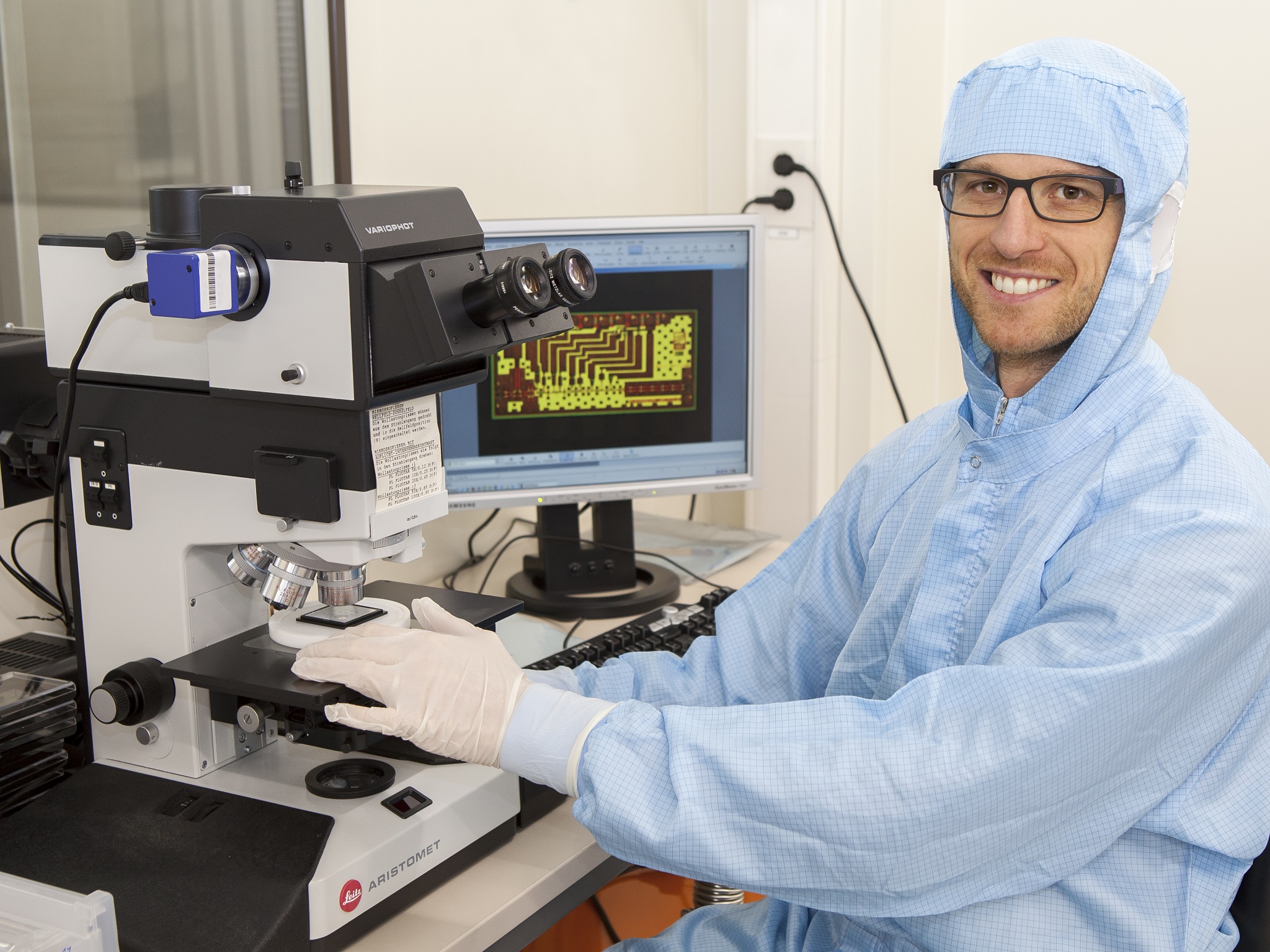Markus Rösch is a researcher in the field of microelectronics at Fraunhofer IAF. His passion for research and his interest in high-frequency technology in particular led him to Freiburg. Currently, he is working on the MetOp-SG project equipping satellites from the European Space Agency (ESA) with highly-sensitive amplifiers. In the interview he speaks about his reason to become a scientist and when the satellites with IAF technology will be launched into space.
What has been your motivation for a career in research?
In research, I work on things that are not commonplace and I develop devices and processes that are at the forefront. This allows me to design something completely new by always looking for different approaches to reach the goal. The link between industry and research at the IAF tipped the scales for me: a good balance between fundamental research and the incentive to develop innovations for the industry.
What are you currently working on?
The MetOp-SG project plays a big role in our department. Its goal is the development of the latest generation of ESA weather satellites. We supply the hardware we have developed to certain institutes that will later build the receivers for the satellites. At the moment, we are about to deliver the required chips to the institutes to get everything running, so that ESA and Airbus can build the satellites. At present, our chips are being qualified there, which means they are subjected to different tests, for example, the simulation of a rocket launch. During this process we support and give advice for the qualification. We want our chips to be delivered in a pure condition and to function perfectly.
In addition to MetOp-SG, I also work on different projects such as the »millimeter-wave camera«. The camera is an in-house development of the IAF. With its 100 gigahertz the camera can support rescue units in emergency situations, providing them with a good visibility. Additionally, it can be used as a helicopter landing aid.
What makes a cooperation with ESA so special?
The special appeal to work with ESA is that the developed component will actually become part of a satellite that will be launched into space – getting the chance to work on such a project is, of course, fantastic. The first satellite is to be launched in 2021, which I am excited about. Until then, everything should be finished. My experience of collaborating with ESA has been absolutely positive. For all our tasks, we always try to push our research to the limits to get the most out of it. And even if we receive a different outcome than expected, we will not lack excitement as we are working in research. This is a great advantage over the industry. To acquire such an ESA-funded project is, of course, a great deal of effort. As an applicant, you have to go through various levels that involve different authorities. Some applicants even joke that the application process for a project involves as much effort as the actual research.
What has been your personal highlight at the IAF so far?
We made considerable progress towards the goal of completing our millimeter-wave cameras, thanks also to our PhD students and their great work. We were actually able to get some first good pictures from the camera, which was a great moment.
For me it will be a major highlight when the satellite, equipped with our chips, will have been launched into space and everything works. In 2021 - I will certainly glance up to the sky more often.
How would you describe Fraunhofer IAF in three words?
Multifaceted: We always seek innovative approaches and try something new.
Good teamwork with our colleagues.
Plenty of possibilities: In particular when it comes to equipment and measurement systems, Fraunhofer IAF is excellently equipped.
Here you can find more informations about the MetOp-SG project
 Fraunhofer Institute for Applied Solid State Physics IAF
Fraunhofer Institute for Applied Solid State Physics IAF